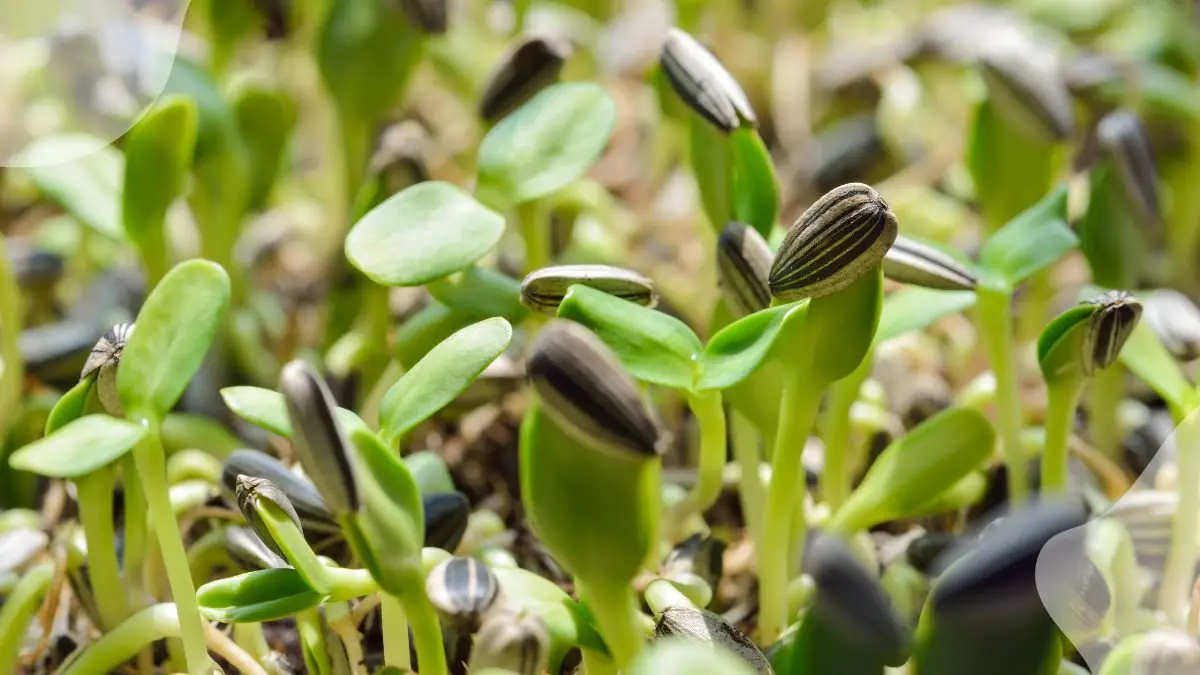Ready to transform a tiny seed into a stunning sunflower? Learn how to grow sunflower plants from seeds effortlessly. Discover the straightforward steps to nurture these vibrant blooms from humble beginnings to towering beauties. Contrast the small, unassuming seed with the majestic and colorful sunflower it will become. Plant flowers in pots, unleash your green thumb, and witness the magic of nature as you cultivate your own sunflower garden. Get ready to bask in the sunshine of your blooming success!
Key Takeaways
- Start Small: Begin by understanding sunflower growth stages to effectively choose, prepare, plant, nurture, and harvest sunflowers.
- Quality Seeds: Select high-quality sunflower seeds based on your desired size, color, and variety for a successful growth journey.
- Nutrient-Rich Soil: Prepare the soil by ensuring it is well-drained, fertile, and receives adequate sunlight to support healthy sunflower growth.
- Planting Precision: Utilize proper planting techniques such as spacing seeds correctly and planting at the right depth to optimize sunflower development.
- Careful Nurturing: Provide consistent water supply, protect seedlings from extreme conditions indoors, and ensure they receive ample sunlight for robust growth.
- Natural Defense: Implement organic weed and pest management strategies to safeguard sunflowers without harmful chemicals, promoting a thriving environment.
Understanding Sunflower Growth
Growth Stages
Sunflowers go through distinct growth stages from seed to mature plant. Germination occurs within 7-10 days after planting, where the seed sprouts and develops roots. Seedling stage follows, with the plant growing its first leaves. Vegetative stage sees rapid growth in stem and leaves. Budding stage is when flower buds start forming, leading to the blooming stage where flowers open up.
Ideal Growing Conditions
For optimal growth, sunflowers require full sun exposure, at least 6-8 hours daily. They thrive in well-drained soil with a pH of 6.0-7.5. Spacing is crucial; plant flowers seeds 6 inches apart in rows or 1-3 feet apart for larger varieties. Regular watering, especially during dry spells, is essential.
Maturity Timeline
Sunflowers typically take 80-120 days to reach maturity from planting. The exact time varies based on the variety planted and growing conditions. Annual sunflowers complete their life cycle within a year, whereas perennial varieties can live for multiple years if cared for properly. Harvesting is usually done once the back of the flower head turns yellow and the petals begin to dry out.
Choosing Sunflower Seeds
Space Availability
When selecting sunflower seeds, it's crucial to consider the available space for planting. Different varieties require varying amounts of space to grow properly. Ensure that the chosen variety fits the designated planting area.
Bloom Size and Color Preferences
Sunflower seeds come in a wide range of bloom sizes and colors. Consider your preferences when choosing seeds to ensure that the eventual blooms align with your aesthetic vision. Whether you prefer large, vibrant blooms or smaller, more subtle ones, there is a sunflower seed variety to suit your taste.
Hybrid or Heirloom Options
For those looking for different sunflower varieties, exploring hybrid or heirloom options can provide a unique twist to your garden. Hybrid seeds are created by cross-pollinating two different varieties to produce plants with specific characteristics. On the other hand, heirloom seeds are open-pollinated, passed down through generations, maintaining their original traits.
Preparing the Soil
Test Soil
Test soil pH levels before planting sunflower seeds to ensure they fall within the optimal range. Sunflowers thrive in slightly acidic to neutral soil with a pH between 6.0 and 7.5. Use a pH testing kit available at garden centers for accurate results.
Improve Drainage
Enhance soil drainage by incorporating organic matter such as compost into the ground. This helps prevent waterlogging, which can lead to root rot in sunflowers. Mix compost into the top 6-8 inches of soil to promote healthy root development.
Importance of Preparation
Understand the significance of thorough soil preparation for successful sunflower growth. Properly amended and well-draining soils create an ideal environment for sunflowers to establish strong root systems and flourish throughout the growing season.
Planting Techniques
Planting Depth
Sunflower seeds should be planted at a depth of 1 to 1.5 inches in loose, well-draining soil. This depth allows for adequate moisture absorption and root development.
When planting sunflower seeds, ensure you space them according to the specific requirements of the sunflower variety you are planting. Some varieties may need more space to grow properly.
Succession Planting
Consider using succession planting methods to ensure a continuous blooming period for your sunflowers. By staggering your planting times, you can enjoy blooms throughout the season.
- Pros of Succession Planting:
- Ensures a prolonged blooming period.
- Helps maintain a consistent supply of fresh flowers.
- Cons of Succession Planting:
- Requires careful planning and monitoring of planting times.
Succession plantings involve planting new seeds every few weeks to extend the blooming season. This method is particularly useful if you want a constant supply of fresh flowers for aesthetic or harvesting purposes.
Nurturing Seedlings Indoors
Providing Adequate Light and Warmth
To grow sunflower seedlings indoors successfully, ensure they receive ample light and warmth. Place them near a sunny window to benefit from natural sunlight. Consider using grow lights if natural light is insufficient.
Monitoring Growth and Development
Regularly check the seedlings for signs of proper growth and development. Look out for sturdy stems and healthy green leaves. Ensure the soil remains moist but not waterlogged to prevent root rot.
Preparing for Outdoor Transplanting
When the sunflower seedlings reach a certain stage of maturity, typically around 2 to 3 inches in height, they are ready for transplanting outdoors. At this point, the roots should be well-established, and the stems sturdy enough to withstand outdoor conditions.
Steps for Successful Transplanting
- Choose a sunny spot in your garden with well-draining soil for transplanting.
- Dig holes that are slightly larger than the root ball of each seedling.
- Carefully remove the seedlings from their pots, ensuring not to damage the roots.
- Place each seedling in its hole and gently pat down the soil around it.
- Water the newly transplanted seedlings thoroughly to help them settle into their new environment.
Benefits of Indoor Seedling Care
- Allows for early growth monitoring and intervention if needed.
- Provides a controlled environment for optimal development before outdoor exposure.
Meeting Water Requirements
Establishing a Schedule
Sunflower plants require adequate water to thrive. When growing sunflowers from seeds, it's crucial to establish a consistent watering schedule. Young sunflowers need frequent watering to promote healthy root development.
Monitoring Rainfall Levels
To ensure your sunflowers receive the right amount of water, it's essential to monitor rainfall levels. Adjust your watering frequency based on the weather conditions. If there is heavy rainfall, you may need to reduce watering to prevent overwatering.
Understanding Growth Stages
As sunflowers grow, their water needs change. During the germination stage, seeds should be kept moist but not waterlogged. Once the seedlings have sprouted, gradually reduce watering to encourage deep root growth. Mature sunflowers are more drought-tolerant but still require regular watering for optimal growth.
When caring for sunflowers, remember that overwatering can lead to root rot, while underwatering can cause stunted growth and poor flower development.
Managing Weeds and Pests
Weed Control
Effective weed control is crucial during the early growth stages of sunflowers. Weeds can compete with sunflowers for nutrients, water, and sunlight, hindering their growth.
Sunflower gardeners should regularly inspect the planting area for any signs of weeds. Manual removal is a simple yet effective way to control weeds without harming the sunflowers.
Common Pests
Various insects and wildlife can pose a threat to sunflowers. Deer are known to feed on sunflower plants, causing significant damage.
To manage pests, gardeners can implement different techniques such as companion planting or installing physical barriers like fences to deter wildlife.
Pest Management Techniques
Gardeners can opt for natural methods such as introducing beneficial insects like ladybugs that prey on harmful pests. This helps maintain a balanced ecosystem in the garden.
For more severe pest infestations, chemical methods like insecticidal soaps or neem oil can be used. These products effectively target pests while minimizing harm to beneficial insects.
Ensuring Proper Nutrition
Applying Fertilizer
After sunflower seedlings have sprouted, apply a slow-release fertilizer to provide essential nutrients for growth. This helps in establishing a strong foundation for healthy plants.
Consider nitrogen split applications to promote optimal growth and abundant flower production. By dividing the nitrogen doses, you ensure a steady nutrient supply for sustained development.
Monitoring Nutrient Deficiencies
Regularly monitor your sunflowers for any signs of nutrient deficiencies. Look out for yellowing leaves or stunted growth as indicators of potential issues.
Adjust your fertilization routine accordingly based on the specific needs of your sunflowers. By addressing deficiencies promptly, you can prevent growth setbacks and ensure vibrant, thriving plants.
Incorporate these nutritional practices into your sunflower care routine to support robust growth and vibrant blooms. Proper nutrition is key to cultivating healthy, resilient sunflower plants that can withstand various environmental challenges.
Harvesting Sunflowers
Right Time
Harvesting sunflowers at the right time is crucial for optimal seed production. Wait until the back of the sunflower head turns brown, indicating maturity. This is usually around 30 to 45 days after flowering.
Cutting Sunflower Heads
Cut sunflower heads when the petals have dried and fallen off, revealing a full, plump seed head. Use sharp scissors or pruners to make clean cuts about 4 inches below the head.
Drying Seeds
Dry sunflower seeds before storage to prevent mold and ensure longevity. Spread the seeds in a single layer on a flat surface with good air circulation. Allow them to dry for about one week.
Final Remarks
By following the steps outlined in this guide, you now have the knowledge and tools to successfully grow sunflowers from seed. Understanding the growth process, selecting the right seeds, and providing proper care will ensure a bountiful harvest of vibrant sunflowers in your garden. Remember to nurture your seedlings, meet their water needs, manage weeds and pests, and provide adequate nutrition for optimal growth.
Now that you are equipped with the essential information to cultivate sunflowers, it's time to get your hands dirty and put your newfound skills into practice. Start planting those sunflower seeds, care for them diligently, and watch as your garden transforms into a colorful haven of these majestic flowers. Enjoy the process and revel in the beauty that your dedication will soon yield!
Frequently Asked Questions
How long does it take for sunflower seeds to sprout after planting?
Sunflower seeds typically sprout within 7 to 14 days after planting, depending on the variety and environmental conditions. Ensure proper moisture, soil warmth, and sunlight for successful germination.
What is the best time to plant sunflower seeds?
The best time to plant sunflower seeds is in late spring or early summer when the soil temperature has warmed up to around 55-60°F (13-16°C). This allows for optimal seed germination and growth during the sunny summer months.
Do sunflowers need a lot of water to grow?
Sunflowers require regular watering, especially during their early growth stages. Keep the soil consistently moist but not waterlogged. Once established, they are drought-tolerant plants that can thrive with less frequent watering.
How do I protect my sunflower plants from pests and diseases?
To protect sunflower plants from pests and diseases, regularly inspect them for signs of infestation or infection. Use natural remedies like neem oil or introduce beneficial insects. Proper spacing, good air circulation, and healthy soil also help prevent common issues.
When is the right time to harvest sunflowers?
The right time to harvest sunflowers is when the back of the flower head turns yellow and the petals start to dry out and fall off. Cut the flower head with a few inches of stem remaining and hang it upside down in a dry, well-ventilated area to finish drying before extracting the seeds.
Image Source: Paid image from CANVA




